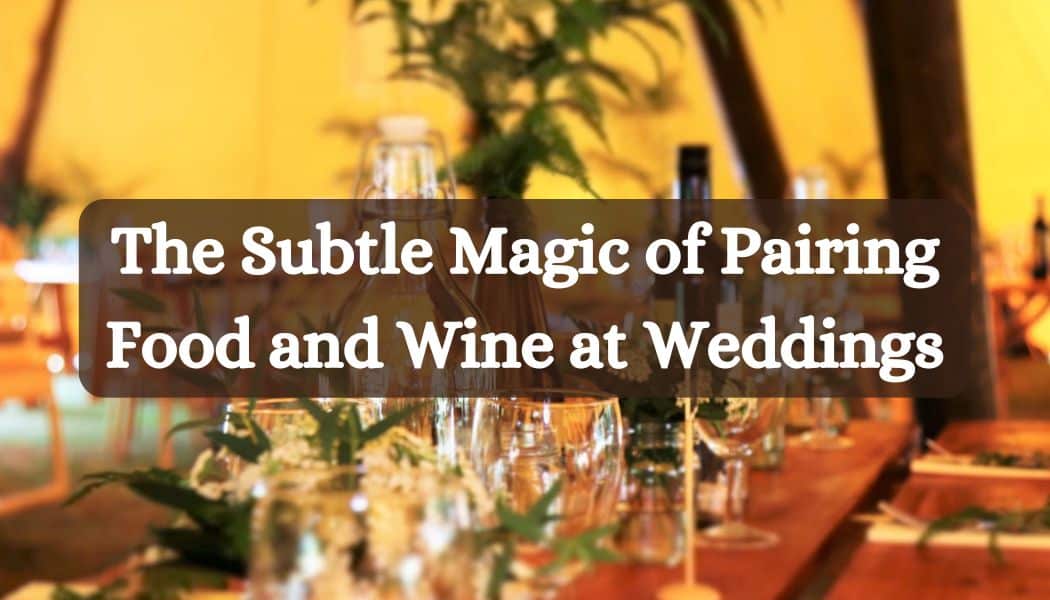
A wedding day carries layers of meaning, from vows to the venue, from flowers to the music. Among all these elements, food and wine often hold a quiet power. They shape the mood, enhance conversation, and linger in memory long after the last dance.
The subtleties of pairing wine with dishes transform a meal from functional to memorable, and create moments that feel effortless yet carefully considered.
Table of Contents
Why Food and Wine Pairing Matters
At weddings, food is more than sustenance. It is part of the storytelling, reflecting personalities, family traditions, and regional influence. Wine amplifies these narratives.
Enhancing Flavors
A well-chosen wine can elevate a dish, bringing forward hidden notes in both food and drink. For instance, a crisp white with citrus undertones can sharpen the brightness of a salad, while a rich red can smooth the texture of roasted meats.
At a wedding, these combinations make every bite feel intentional, as if the couple has woven their tastes into the experience of the meal.
Setting the Mood
Food and wine influence the atmosphere. Light, sparkling wines introduce a sense of celebration at the start of the reception. Fuller-bodied reds encourage slower conversation during the main course.
Timing the service of each wine with the flow of dishes creates rhythm in the dining experience, keeping guests engaged without forcing attention.
Memorable Experiences
Guests may forget the color of napkins or the pattern of the tablecloths, but they rarely forget a meal that surprised them in a good way. Wine adds dimension. It invites discussion, laughter, and sometimes curiosity, turning ordinary courses into moments remembered for years.
Matching Wine to Wedding Courses
Pairing wine with a full wedding menu requires understanding both flavors and textures.
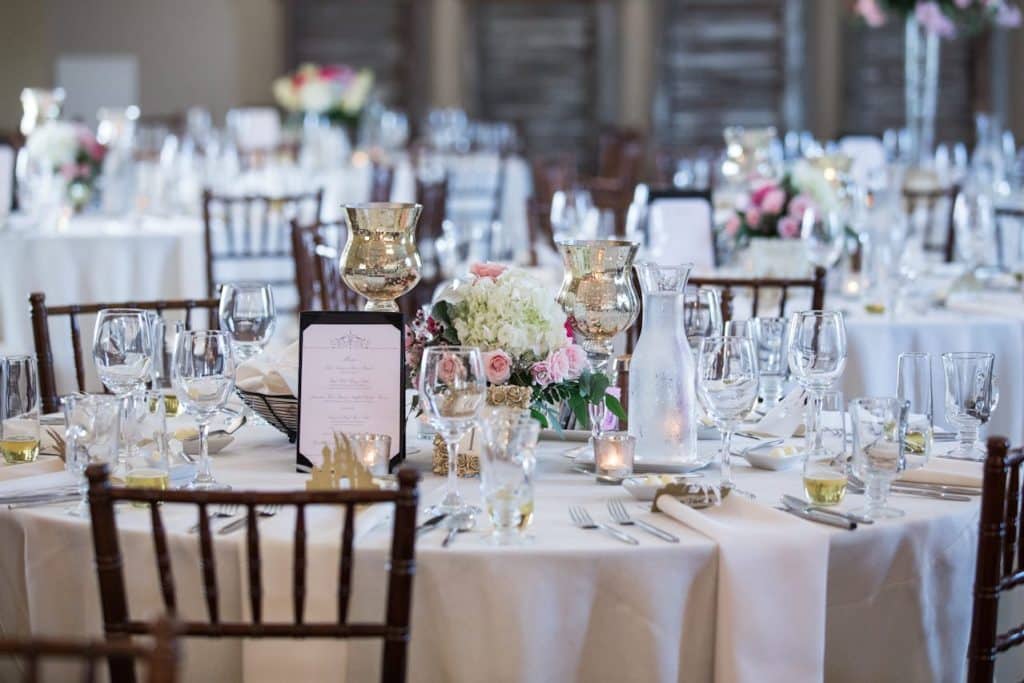
Starters and Aperitifs
Appetizers often include fresh vegetables, seafood, or light cheeses. Wines here should be bright, clean, and easy to drink. Sparkling wines, dry rosés, and crisp whites bring energy to the table. The idea is to awaken the palate, not overwhelm it.
Main Courses
The main course carries the weight of the evening. Richer dishes call for fuller wines. Roasted meats, earthy vegetables, and creamy sauces respond well to medium to full-bodied reds or structured whites. Lighter proteins, like fish or poultry, pair beautifully with more restrained whites or rosés.
Thoughtful selection ensures that the wine and dish amplify each other rather than compete.
Desserts
Sweet courses benefit from wines that echo or contrast the sugar content. Late-harvest whites, dessert wines, or sparkling options can add a celebratory close. Serving a wine with subtle sweetness alongside a dessert preserves balance, preventing the wine from tasting flat or the dessert from becoming cloying.
The Role of Regional Influence
Couples often draw inspiration from regions meaningful to them, and wine can extend that story.
Local Pairings
Highlighting wines from a couple’s hometown or a favored travel destination adds a personal touch. A crisp Italian Pinot Grigio with a Tuscan-inspired menu or a German Riesling with lighter appetizers makes the pairing part of the narrative.
A California Chardonnay alongside locally sourced seafood also adds a sense of place, weaving the wine into the story of the meal.
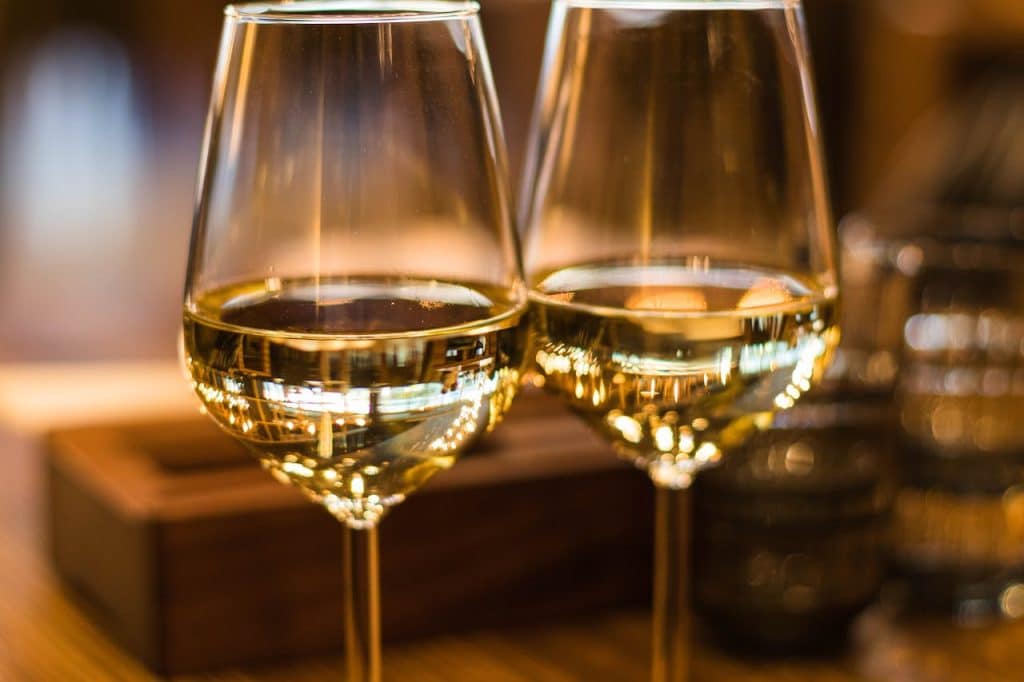
Cultural Touches
Some families emphasize tradition. French wines for French-influenced cuisine, Spanish reds for tapas-style spreads, or New World wines with modern menus. The subtle alignment between food, wine, and heritage can create cohesion without being overt.
Practical Considerations for Weddings
Successful pairings require planning, but the process is not complicated.
Guest Preferences
Guests arrive with different tastes. Some favor red wine, others white, and some abstain completely. Including multiple options during the meal allows flexibility without interrupting the flow.
A sparkling wine or light white during appetizers and a robust red for the main course covers most preferences naturally.
Serving Temperature
Wine loses character if served too warm or too cold. Whites and rosés shine chilled but not icy, reds benefit from slight breathing to release aromas. Ensuring service follows correct temperature guidelines preserves the integrity of both the wine and the meal.
Flow of the Meal
Consider pacing. Starters should be brief but flavorful, giving a gentle introduction to the wine. Main courses often take longer, allowing reds or structured whites to develop in the glass.
Desserts close the evening with a wine that leaves the palate refreshed rather than weighed down. Timing influences enjoyment as much as choice.
Signature Moments
Wine can do more than complement a meal; it can anchor experiences that guests remember long after the wedding ends. Thoughtful inclusion of wine in specific moments adds layers to the celebration, making ordinary events feel special and intentional.
Toasts and Celebrations
A sparkling wine or champagne is a traditional choice for wedding toasts, but selecting something slightly unexpected can elevate the experience. A prosecco, sparkling rosé, or lightly flavored sparkling wine brings a fresh twist while maintaining a festive feel.
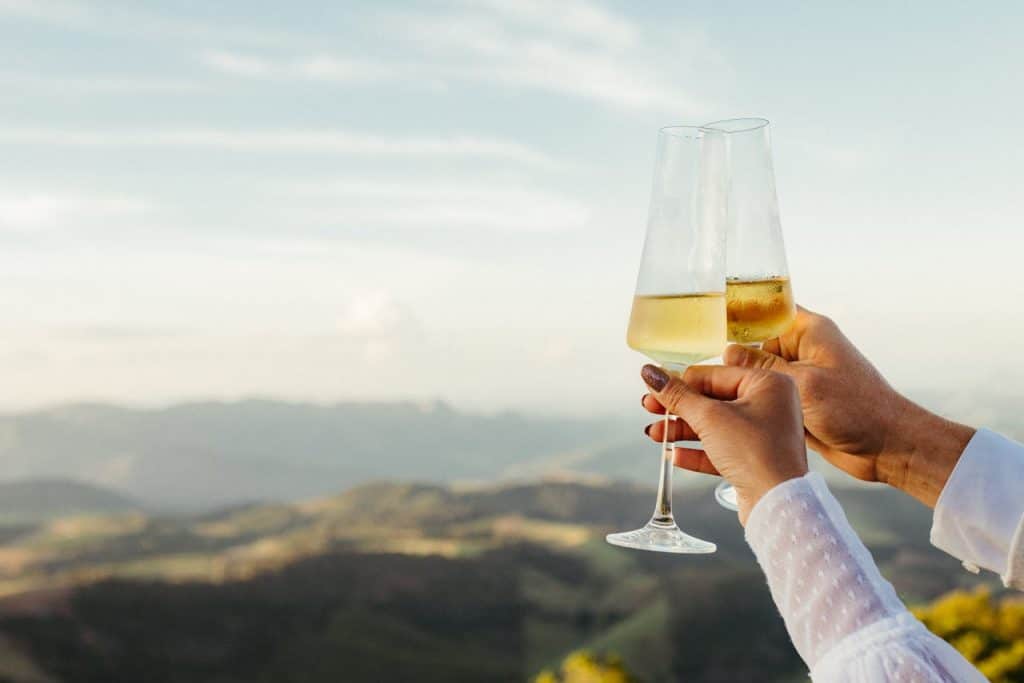
The act of raising glasses takes on more significance when the wine itself reflects the couple’s taste. Guests notice the difference, even subconsciously, and it becomes a talking point during the moment and afterward. Timing and presentation matter, too.
Chilled glasses served at the right moment, poured carefully by attentive staff, emphasize the celebratory nature of the toast and make it feel deliberate rather than rushed.
Personal Touches
Some couples integrate wine into the reception in creative ways. Offering a curated tasting experience or a flight that mirrors the courses of the meal allows guests to engage actively with the flavors.
Providing a brief note on the menu explaining why each wine was selected helps guests appreciate the thought behind the pairing. It also encourages conversation, allowing guests to compare impressions and discover flavors they might not have chosen otherwise.
These personal touches create a more immersive experience and make the wine feel like part of the couple’s story rather than a functional addition to the meal.
Pairing for Families and Mixed Groups
Weddings often host multigenerational guests, so pairing strategies must account for those who do not drink alcohol, as well as young attendees. A well-thought-out approach ensures everyone feels included and comfortable without disrupting the flow of the celebration.
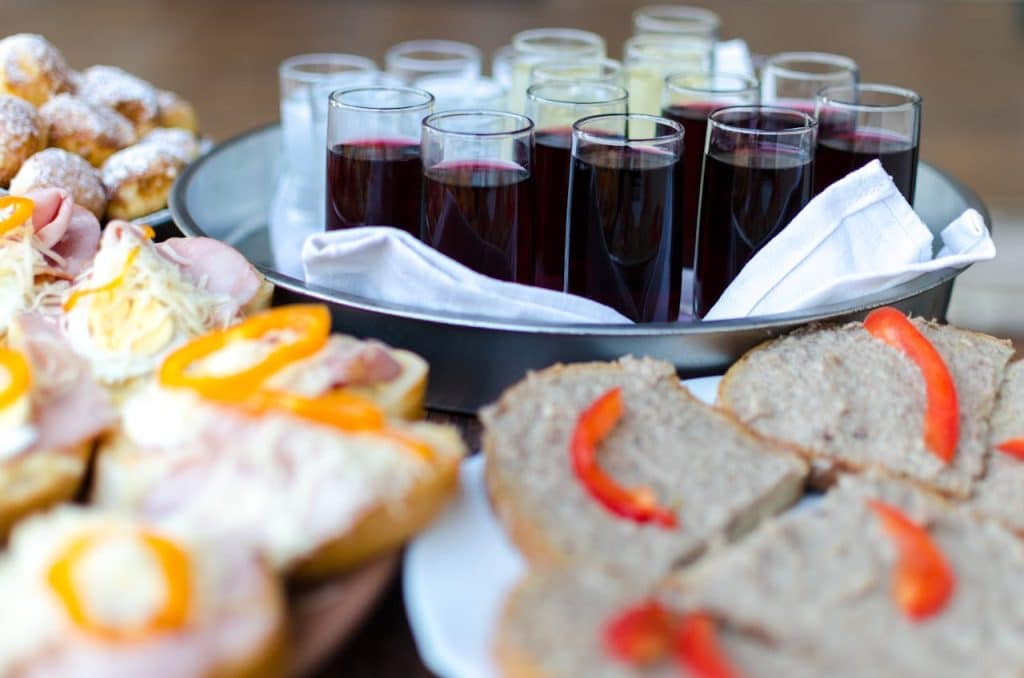
Non-Alcoholic Options
Non-alcoholic alternatives can be just as elegant as their alcoholic counterparts. Sparkling water, alcohol-free wines, or fruit-based beverages allow guests who avoid alcohol to participate fully in the meal and celebrations.
Serving these drinks in proper glassware maintains the aesthetic cohesion of the tablescape, making the experience uniform for all attendees. Thoughtful placement of water and non-alcoholic options also encourages hydration, which is especially important for long receptions where food, music, and dancing fill the hours.
Children’s Meals
Children often receive simplified plates, but including a symbolic pairing elevates their experience. A small glass of grape juice or fruit punch alongside dessert mirrors the adults’ wine pairing, making young guests feel part of the ritual.
This gesture is subtle yet impactful, showing that the couple values everyone at the table. It also prevents children from feeling excluded during toasts or celebrations where wine is central, keeping the atmosphere cohesive for families.
Subtle Magic in the Details
The most effective wine pairings at weddings operate quietly, influencing mood, perception, and memory without demanding attention. These details create depth in the dining experience, enhancing the celebration in ways guests may not even consciously notice.
Visual Presentation
Wine adds a visual layer to the tablescape. The color in the glass, the way light glances off the surface, or the gentle condensation on a chilled bottle contributes to an understated elegance. These cues reinforce attention to detail without being ostentatious, subtly signaling the care that went into planning the meal.
Guests take note of the effort, even if they do not articulate it, and it elevates the overall impression of the reception.
Layered Flavors
The interplay between food and wine can heighten textures and accentuate flavors. A well-chosen wine can make fatty elements feel lighter, enhance sweetness in desserts, or cut through richness with acidity. This invisible choreography elevates each course, allowing the meal to feel dynamic and thoughtfully composed.
It transforms tasting into an experience that goes beyond filling the stomach, encouraging guests to pay attention to the nuances in flavor that make each bite memorable.
Conversation Starters
Wine naturally encourages discussion. Guests might comment on a specific vintage, ask questions about the selection process, or share their preferences with neighboring diners. These micro-interactions foster social energy, helping break the ice between tables and generations.
Wine can become an organic connector in the room, bridging personalities and prompting shared moments of curiosity or delight.
Endnote
Food and wine at weddings work quietly, shaping experience more than overt attention. Thoughtful pairing lifts meals, enhances conversation, and provides sensory memory that lasts longer than decorations or music. It is not about extravagance or rigid rules—it is about rhythm, balance, and understanding how flavors interact naturally.
By paying attention to the subtle details of pairing, couples can craft a meal that reflects taste, tradition, and personal story. Guests walk away nourished, refreshed, and often surprised at how a glass of wine can change the perception of a dish.
The magic is in the subtlety, in moments that feel unplanned but deliberate, making the wedding meal an experience rather than a service.













